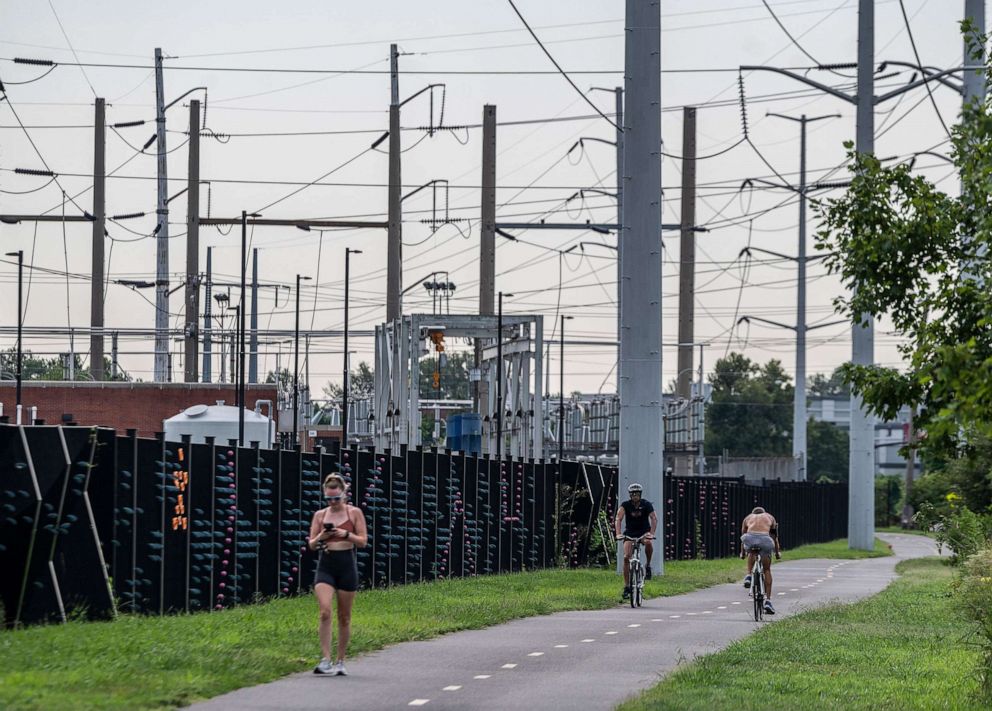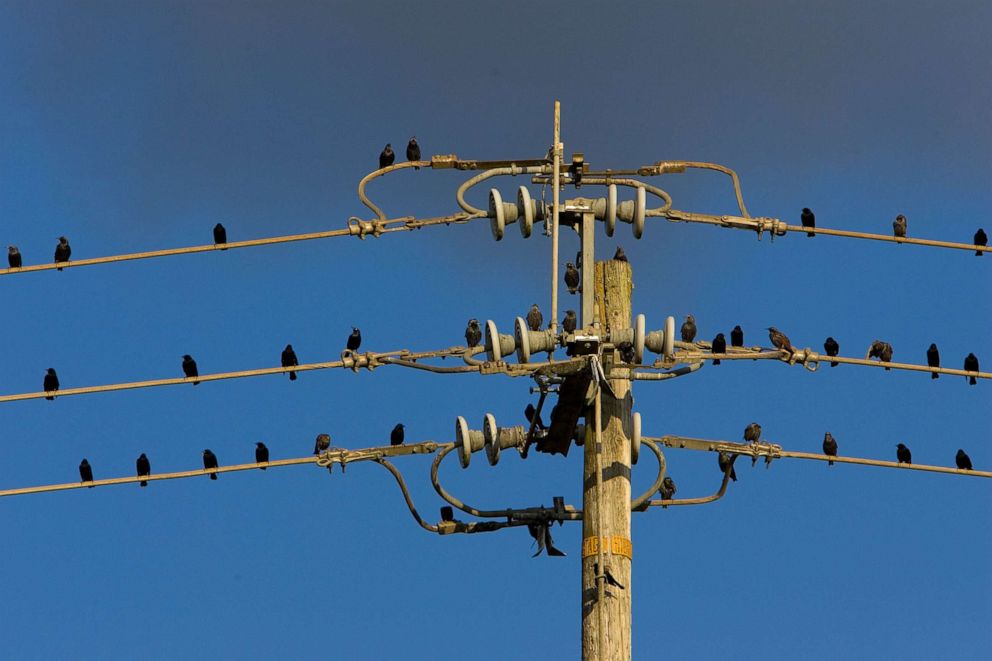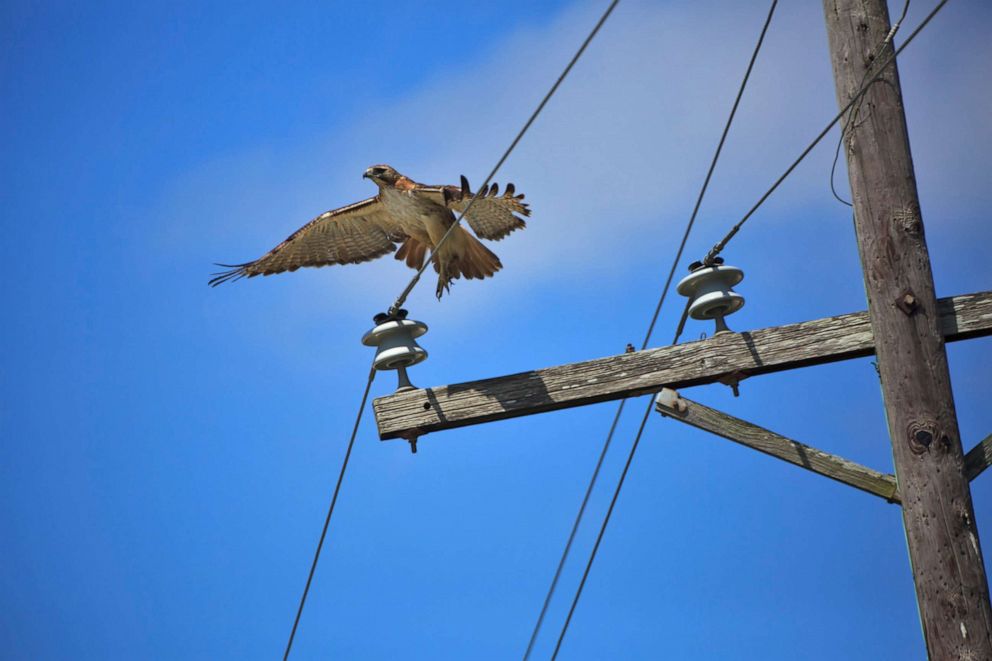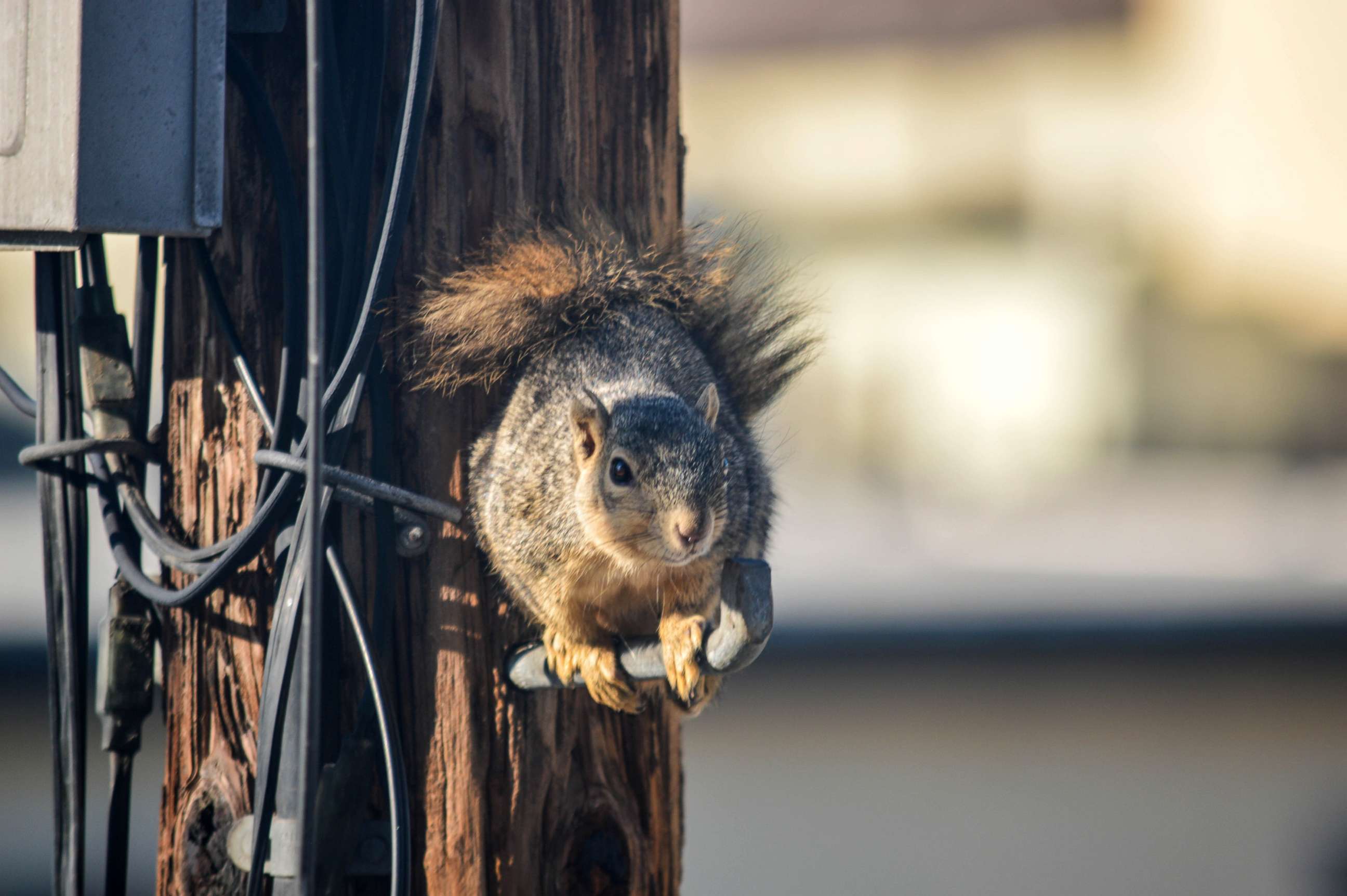Wildlife could pose 'catastrophic' risks for power grids, experts say
Animals also play a role in the reliability of the overall power system.
Sometimes Mother Nature and modern technology just don't mix -- especially when it comes to the nation's power grids.
Gusty winds knock down power lines and spark wildfires. Vegetation surrounding the substations catch fire. Severe winter storms cause mayhem at substations, bringing freezing conditions to regions with infrastructure not built to withstand frigid temperatures. And these threats are expected to worsen as the number of severe weather events continue to climb due to climate change.
But the risks posed by nature don't end with natural disasters. Wildlife also poses a significant threat to power grids, experts told ABC News.
"Animals also play a role in the reliability of the overall power system," Drew McGuire, the director of substations, distribution and environment research at the Electric Power Research Institute, a non-profit energy research and development organization, told ABC News. "We typically see this in distribution in the lower voltages that you would typically see in neighborhoods and things like that in in substations."

One of the biggest ways animals disrupt the flow of electricity to households is by breaking into electrical substations, Luis Puigcerver, a senior product manager for wildlife and asset protection at TE Connectivity, a technology company that designs and manufactures connectors and sensors, told ABC News.
Once critters such as squirrels, rats, raccoons and even snakes get into the substation, all they have to do is touch two pieces of bare metal to conduct a surge, Puigcerver said. Just the slightest touch could cause a flashover, which is involves electricity running through the animal from one electrical bare connection to another or to a grounded position, he added.
"They're sitting on a piece of metal that that's either grounded or electrified, and then they touch their pop of their nose," Puigcerver said. "And sometimes they don't even have to touch and get very close to it and it'll bridge the gap -- literally cause that electricity to jump from the metal through the body of the creature and then short itself out."
What results is a small explosion that leaves the animal burned electrocuted and causes damage to the substation and outages to sometimes thousands of households, Puigcerver said. Sometimes, the animal can even catch fire, he said.
"It could be catastrophic," he said. "In some areas, I've seen a small little 12-inch squirrel, blow up a $2 million-plus transformer."'

Birds, especially birds of prey with large wingspans, pose the second more significant threat to power grids, Alex Mackewich, Power Line Sentry, a company that designs power protection solutions to prevent power outages and wildlife deaths, told ABC News.
Power poles in the U.S. typically are made with wooden poles and three wires as conductors. While it's a common sight to see flocks of smaller birds sitting safely on one wire, the danger is present when the birds are able to touch two different charges as once.
Squirrels and sometimes snakes can also climb onto the wires and cause this damage, but in North America, birds are typically the culprits, Puigcerver said. Bald eagles especially love to perch on top of the poles to hunt for prey, but when it takes off with its 6-foot wingspan and touches multiple bare wires, that electric surge will then flow right through it, he said.
Then, if it falls to the ground onto dry vegetation, it could spark a wildfire, Mackewich said.
Animals have proven problematic in the past.
In March, a bird that flew into an electrical substation was blamed for taking out power for nearly 10,000 customers in New Orleans.

A slug was blamed for cutting power for nearly 10,000 riders of two dozen high-speed trains in Japan in 2019. A weasel was the cause of a similar shutdown of Europe's Large Hadron Collider in 2016.
Squirrels, which have been such a problem in the past that the American Public Power Association tracks squirrel-caused blackouts with its Squirrel Index, are thought to be more dangerous to power grids than Russian hackers. In 1987, a stray squirrel was blamed for shutting down the NASDAQ for 82 minutes, thwarting the trade of an estimated 20 million shares.
The data about the number of outages in the past caused by wildlife is likely underrepresented as technology advances and tracking methods improve, Mackewich said.
Sometimes turning the power back on is as simple as resetting some of the lines so the power can be redirected. Other times, customers can be without power for hours or even days as crews work to repair the damage, Puigcerver said.
Officials will need to ensure the infrastructure is sound as the world begins to rely less on fossil fuels and more on electricity, Mackewich said. Most of the structures in the U.S. are at least 50 years old, and there are many that are more than 100 years old, she said. Power grids are not only subject to a demand they likely were not built for, but climate change continues to threaten the grids.
The ultimate "failsafe" is to create underground lines that are protected from the elements, Puigcerver said. But burying the power lines underground is expensive and requires extensive planning around the topography of the land.

Utility companies spend a lot of time thinking about how to mitigate potential impacts and how to do so in a cost-effective way, McGuire said.
Three types of technology are used to prevent outages, he said. Insulation products, covers that companies would use to cover power lines and transformer metal connectors, act to prevent an animal such as a squirrel or a bird from making contact with an energized component. Isolation products, something like a fence or spikes, are installed to prevent birds from perching, and discs are used in similar ways at substations. And hazing products, products that are meant to discourage animals from from entering the general area, include flight diverters or a plastic owl, and, in some cases, noise machines, McGuire said.
TE Connectivity has created plastic materials designed to withstand the rigors of pollution, ultraviolet rays and electrical activity, some which cover critical areas such as bare wires and transformer metal connectors to prevent accidents on power lines and substations, Puigcerver said.
"And that's why these devices that you put up from a maintenance standpoint and from a reliability standpoint, come into play afterwards," he said.



